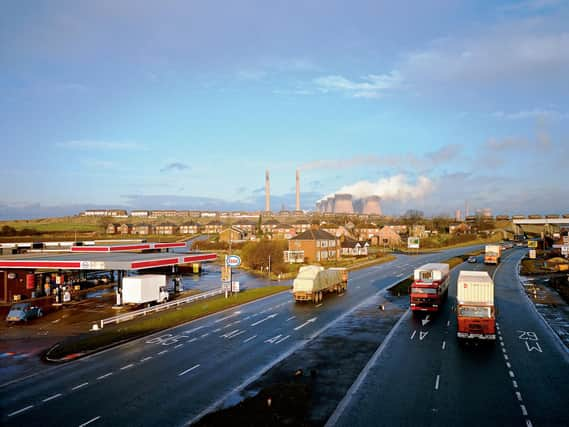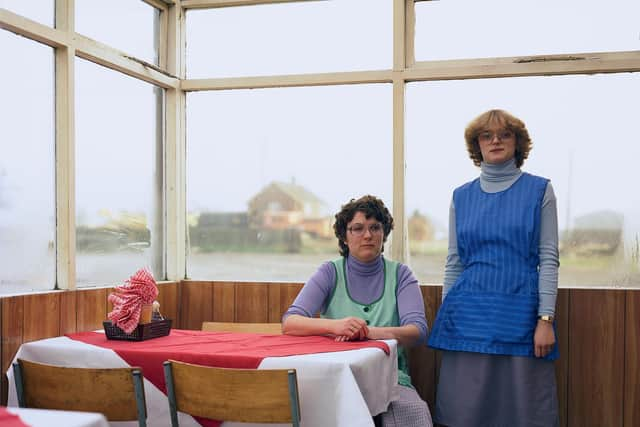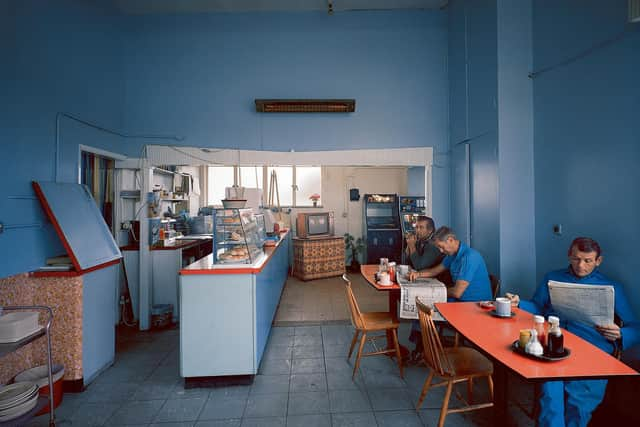The A1 - photos of the Great North Road from the 1980s captured in new book


It stretches from London to Edinburgh and, at around 400 miles long, it is our longest road. It’s also one of our most historic. Long before railways and motorways, stage coaches travelled along this route when it was little more than a dirt track.
Some of my earliest memories stem from long family journeys heading up and down the A1 in my dad’s blue Hillman Hunter, and no doubt many of you reading this will have similar memories of your own.
Advertisement
Hide AdAdvertisement
Hide AdThis thin artery is more than just a road, it’s part of our nation’s history as are the countless number of people that have travelled along it over the years. It has a story to tell and it’s one that is captured in Paul Graham’s book A1: The Great North Road.


Graham is an award-winning photographer who has enjoyed solo exhibitions in the Museum of Modern Art (MoMA) in New York, the Tate and the Whitechapel Gallery. His book – originally self-published in 1983 – is a portrait of the nation seen from this fabled road and has now been published by Mack and ties in with an exhibition at the Huxley Parlour gallery in London.
Starting in 1981, Graham made repeated journeys up and down the road armed with a large-format camera to record the people, buildings and landscape along the way. His subsequent colour photographs are a snapshot of Britain during the early years of Margaret Thatcher’s stint in power - a time still within touching distance.
They capture an analogue world seemingly at odds with our modern, digital existence, and yet these photographs offer an intriguing insight into issues that still exist today, namely regional inequalities, the political divide between North and South, not to mention the extent to which domestic travel has (and hasn’t) changed over the past 40 years.
Advertisement
Hide AdAdvertisement
Hide AdAs well as originally being self-published, the book was also Graham’s first. So why choose this particular subject? “My father’s side of the family was from the Lake District and we lived in Essex so when I was younger we’d go up the A1 and turn off at Scotch Corner. So there was the excitement of holidays and it’s a journey that’s embedded in me. Quite often we’d be driving through twilight or late into the night, so there was an added mystery to this journey where we traversed the length of the nation.”


He was in his mid-20s when he took the photos. “Mrs Thatcher was in power at the time and I wanted to take a look at the nation with my own eyes without relying on what the politicians or the newspapers were saying. Artistically it also gave me a broad canvas to do things, whether it was portraits or landscapes, or the interiors of cafes with a steaming cup of tea on the corner of a table.”
The A1 cuts a swathe through Yorkshire and Graham became familiar with certain places. “I remember windswept stretches of the road up near Catterick and there’s a picture of one of those grey, tupperware box days we get when the sky is featureless and there are trucks going up and down. I remember embracing that and wanting to include it. There were cafes and B&Bs and I remember going to a little village called Londonderry,” he says.
At first glance, some of the pictures might seem a little prosaic, but what they capture is the vibrancy and reality of everyday life. “There were day trippers, company reps and lorry drivers so there was a real democracy to it all.”
Advertisement
Hide AdAdvertisement
Hide AdIt was also a different era in terms of travel. Today, in the pre-pandemic days at least, people might jet off for a weekend break to the Continent, but 40 years ago that didn’t happen unless you were rich. “Now, if people have a spare weekend they might nip to Brussels or Milan, whereas back then they’d go on the A1 and visit somewhere like Edinburgh.”
Graham’s photographs capture a near past that is already tinged with nostalgia for many people. “At the time those cars, Morris Marinas and things like that, were modern, but to us now they look ancient. It’s the same with the clothes people wore and the colours, not to mention the hairstyles.”
Graham is a self-taught photographer and says his book was born out of the punk movement’s DIY attitude. “The chimneys at Ferrybridge and punk bands driving up and down the country to gigs, that’s as much a part of the legacy of the A1 as all the deeper historical stuff.
“A lot of my friends at the time were musicians and they were all in bands and it was a time when everyone released a single and self-released it. They’d record something in their garage and press 500 copies and go to record shops and try and sell them. And that was empowering. You didn’t have to be Led Zeppelin, you could stamp your own record and sell it. And that was as influential on me as anything on the art photography side of things.
Advertisement
Hide AdAdvertisement
Hide Ad“I’m not Bill Brandt or Robert Frank, but the idea was that maybe I could get my own book out and some people might buy it. And that was very liberating.”
His book was also pioneering in its use of colour in fine art photography and paved the way for a new generation of photographers, including the likes of Anna Fox, Richard Billingham and Tom Wood, to follow suit.
“It was radical and unusual at the time. It wasn’t intentionally radical, it was just something I wanted to do and it broke with the tradition that serious art photography was in black and white, especially anything with a documentary feel to it,” adds Graham.
“It was liberating for me, you know let’s embrace the future, let’s embrace colour and the poppies in the mist that are part of our country. Let’s not reduce everything to a grey scale.”
Advertisement
Hide AdAdvertisement
Hide AdThe book found an audience not only here in the UK, but in some of the most unlikely places. “I had someone from northern Finland who told me he got a copy of my book 25 years ago and said he loved it and would I sign his copy. You think how the hell did someone in northern Finland end up with a copy of my book but somehow they did.”
The A1 is part of our collective story and Graham’s photographs remind us of our shared experience in a world that today feels more fragmented.
The photographer, who now lives in New York, looks back on that period and those pictures, and the people in them, with fondness. “It doesn’t seem like 40 years ago. I’ve never really done a full length trip of the A1 since then. I’ve done bits of it but I haven’t been back to somewhere like Ferrybridge to see what it looks like now the power station has gone.”
Perhaps it’s time that he returned for another look?
A1: The Great North Road by Paul Graham, published by MACK, is out now. www.mackbooks.co.uk
Advertisement
Hide AdAdvertisement
Hide AdSupport The Yorkshire Post and become a subscriber today. Your subscription will help us to continue to bring quality news to the people of Yorkshire. In return, you'll see fewer ads on site, get free access to our app and receive exclusive members-only offers. Click here to subscribe
Comment Guidelines
National World encourages reader discussion on our stories. User feedback, insights and back-and-forth exchanges add a rich layer of context to reporting. Please review our Community Guidelines before commenting.